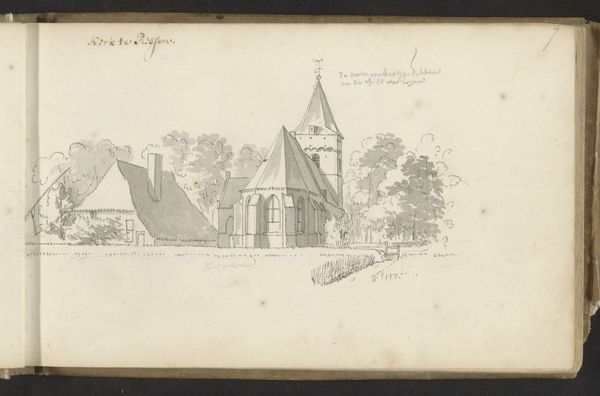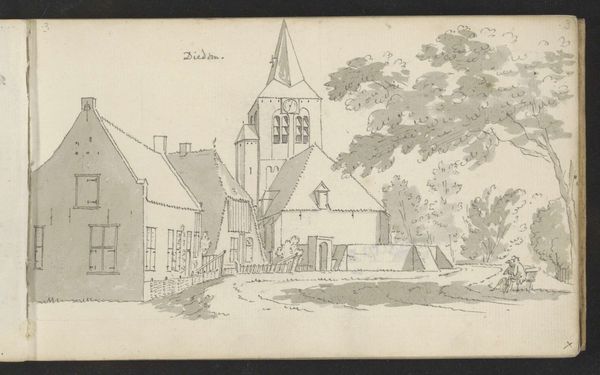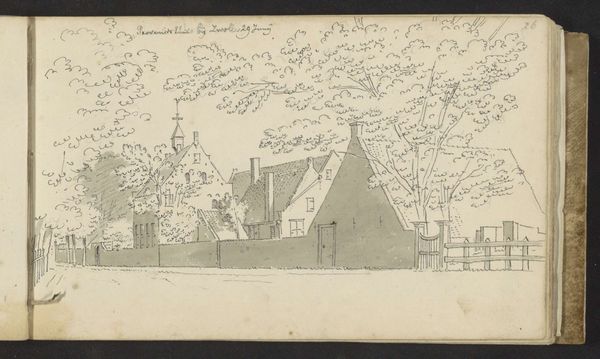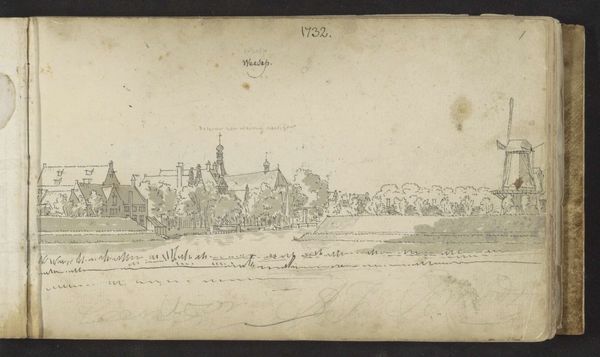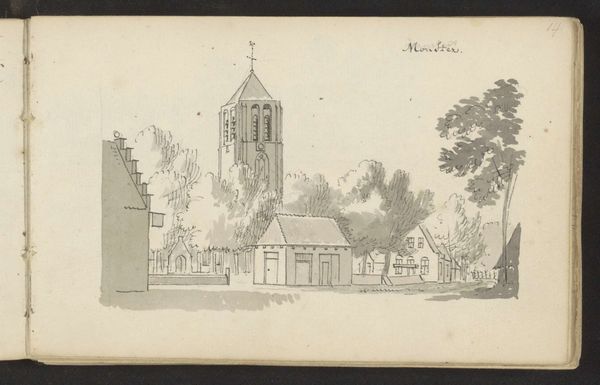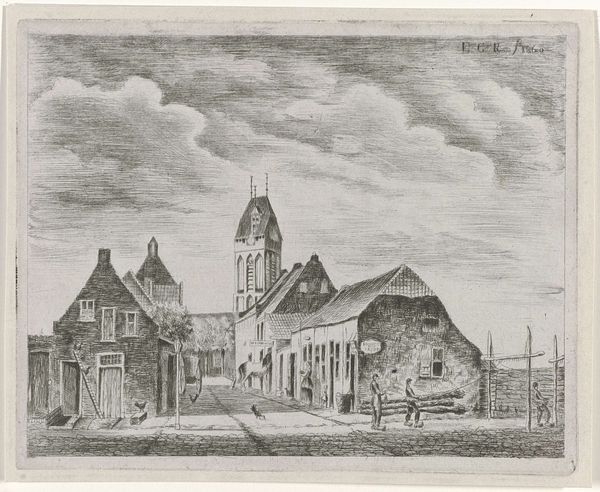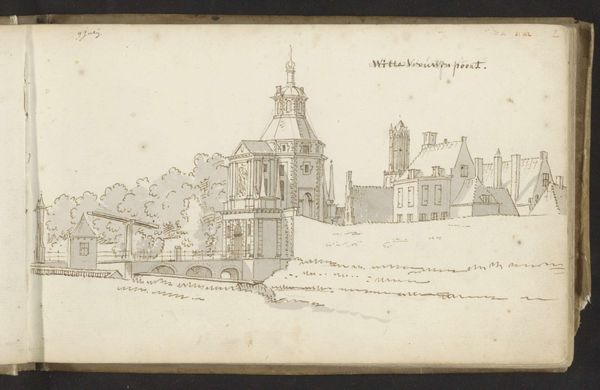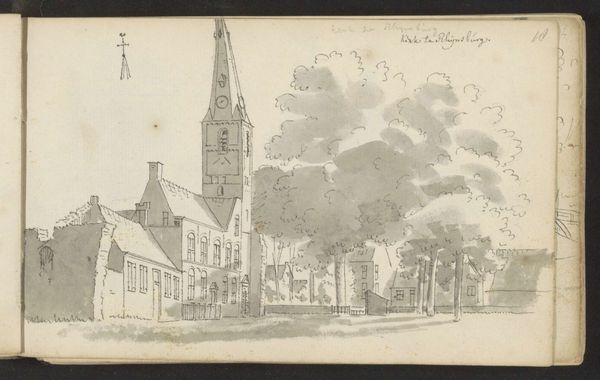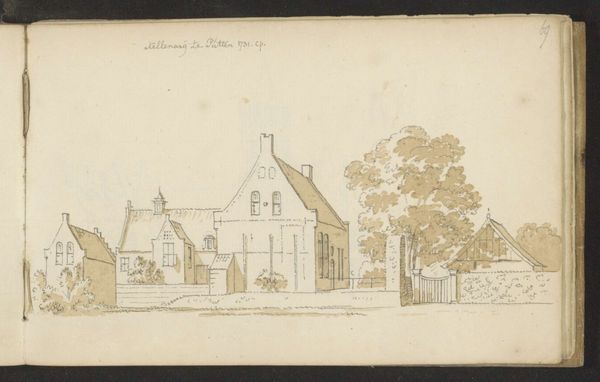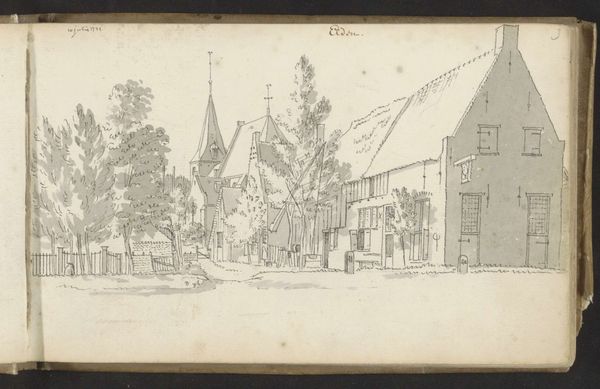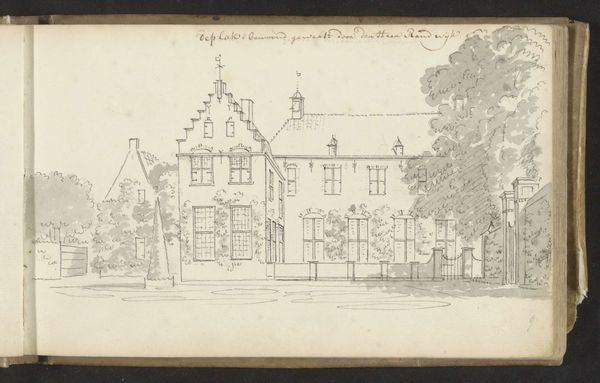
drawing, ink, pen
#
drawing
#
dutch-golden-age
#
pen sketch
#
landscape
#
ink
#
pen
#
cityscape
#
realism
Copyright: Rijks Museum: Open Domain
Curator: Before us is a pen and ink drawing titled “Gezicht op Noordwijk aan Zee,” created in 1731 by Abraham de Haen II. It's part of the Rijksmuseum collection. Editor: The pale palette and the architectural focus give it a surprisingly somber air. There’s a geometric clarity that overrides any sense of whimsy, especially with the strong horizontal lines formed by the sea. Curator: Precisely. This is more than just a depiction of a Dutch coastal town. Notice the centrality given to the church tower, with its clock face clearly visible. Clocks were symbols of time, mortality, but also of civic order and godly adherence to schedule. Consider also that maritime communities have historically needed to structure themselves. Editor: Semiotically rich, of course, but I am more struck by how de Haen uses line. See how varied the lines are. It almost anticipates abstraction, with how the lines act as stand-ins for mass rather than pure representations. Curator: And in the flags waving at the seaside? We can decode the sense of local identity and the ever-present connection between land and sea that was crucial to Dutch identity in the Golden Age. Think of the reliance on fishing and overseas trade and the sense of risk in their line of work. Even the choice to render this town in such fine detail signals to local pride and an emotional connection with community. Editor: True, and there's a contrast in detail; the foreground appears hazier than the clear delineation in the central architectural forms. Curator: This hazy foreground evokes not just realism, but perhaps also nostalgia, inviting us to ponder time's passage, a community's endurance, and maybe the symbolic importance of home. Editor: It certainly complicates a strictly representational reading of the work; the piece plays with surface, structure and symbolism. Curator: The interplay of history, local pride, and perhaps a touch of melancholy is a quite effective fusion of symbol and reality, wouldn't you agree? Editor: Indeed. The linear perspective may be conventional, but the visual impact is unexpectedly nuanced.
Comments
No comments
Be the first to comment and join the conversation on the ultimate creative platform.
